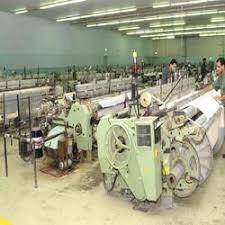

FOIL PRINTING

- Nov 23rd, 2024
Foil Printing
Foil printing on fabrics is a popular method for adding shiny, metallic, or reflective designs to textiles, often used in fashion, interior design, and promotional materials. The process involves applying a metallic foil to fabric through a heat transfer method, creating a visually striking effect.
Foil Printing Process:
- Design Creation:
- A design is created, usually using vector graphics software (such as Adobe Illustrator).
- The design is separated into areas where foil will be applied.
- Screen or Digital Printing:
- A special adhesive is printed onto the fabric in the desired design area. This adhesive is typically screen-printed or digitally printed.
- The adhesive acts as a glue for the foil to adhere to the fabric.
- Foil Application:
- A thin layer of foil (usually made from metallic aluminum or plastic) is placed over the adhesive.
- The fabric is then heated, which causes the adhesive to bond with the foil, transferring the foil onto the fabric in the design's pattern.
- Cooling and Removal:
- After the fabric has cooled down, the excess foil is peeled off, leaving behind only the foil that adhered to the printed adhesive.
- Finishing:
- The fabric may go through additional steps like curing or washing to ensure that the foil is properly bonded and durable.
Types of Foil Printing:
- Hot Stamping Foil Printing: A metallic or reflective foil is applied using a heat press, and the foil adheres to areas where the adhesive has been applied.
- Cold Foil Printing: A cold foil process involves the use of UV-sensitive adhesives and printing technologies, allowing for a quicker process.
- Digital Foil Printing: Uses a digital printer to apply adhesive and then the foil, often offering more precision and detail in design.
Applications of Foil Printing on Fabric:
- Fashion: Foil printing is commonly used on t-shirts, dresses, and accessories to create striking metallic or reflective logos, patterns, and text.
- Sportswear: For creating eye-catching logos or details on jerseys or activewear.
- Home Decor: Used in upholstery, curtains, cushions, and bed linens to add a metallic touch.
- Promotional Items: Apparel and merchandise with logos or designs that require a premium look.
Considerations:
- Fabric Type: Not all fabrics are suitable for foil printing. Commonly used fabrics include cotton, polyester, and blends. Stretch fabrics may present challenges in terms of durability.
- Durability: While foil prints can be visually appealing, they may be less durable than regular prints, especially when exposed to wear and washing. It's important to choose high-quality adhesives and foils to ensure longevity.
- Costs: Foil printing can be more expensive than regular screen printing, especially for smaller runs, due to the cost of materials and the detailed nature of the process.
Foil Printing Services:
There are many printing companies that offer foil printing services for fabric. When choosing a service, it's important to consider:
- The types of fabrics they can print on.
- The quality of their foiling materials (e.g., gold, silver, holographic, matte, etc.).
- Their capabilities regarding custom designs and small or large runs.
- Lead times and pricing.
Do you need recommendations for specific foil printing services, or are you looking to know more about the technical side of the process?











